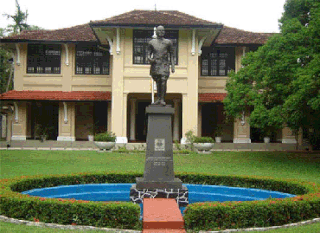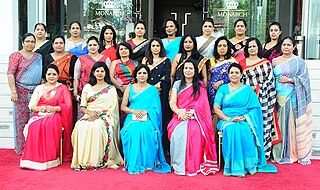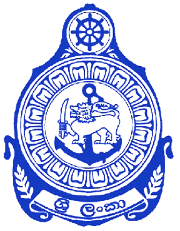 W
WThe Sri Lanka Armed Forces is the overall unified military of the Democratic Socialist Republic of Sri Lanka encompassing the Sri Lanka Army, the Sri Lanka Navy, and the Sri Lanka Air Force; they are governed by the Ministry of Defence (MoD). The three services have around 346,700 active personnel; conscription has never been imposed in Sri Lanka. The Sri Lanka Coast Guard is also under the purview of the Ministry of Defence but is staffed by civilian personal.
 W
WThe Chief of the Defence Staff (CDS) is the most senior appointment in the Sri Lankan Armed Forces, and the highest-ranking military officer in service, outranking the heads of each service branch. The CDS does not, however, have operational command authority over service branches, but rather oversees inter-service co-operation and develops and implements the joint operations doctrine of the Sri Lankan armed forces. Coordination of inter-service joint operations are handled by the Office of the Chief of Defence Staff formally known as the Joint Operations Headquarters.
 W
WThe Commander-in-Chief of the Sri Lankan Armed Forces is the ultimate commanding authority of the Sri Lanka Armed Forces, an executive role vested in the President of Sri Lanka.
 W
WConscription in the Sri Lanka has never been implemented in modern times with its armed forces and auxiliary forces remained all volunteer during the World War 1, the World War 2 and the Sri Lankan Civil War. The Mobilization and Supplementary Forces Act, No. 40 of 1985 gives the Sri Lankan Government the powers to issue a A National Service Order to enlist persons in the National Armed Reserve.
 W
WThe Director General of Sri Lanka Coast Guard is the professional head of the Sri Lanka Coast Guard. He is the most senior officer in Sri Lanka Coast Guard and oversees all Coast Guard personnel throughout the country. The DG SLCG reports to the minister of defense, when the Coast Guard Service is under the Ministry of Defence as it is currently. The current Director General of Sri Lanka Coast Guard is Rear Admiral Samantha Wimalathunge.
 W
WKandawala was the home of General Sir John Lionel Kotelawala CH KBE LLD was a Sri Lankan politician, most notable for serving as Prime Minister of Ceylon from 1953 to 1956. The house is located in a 48-acre (190,000 m2) estate that includes a lake known as Kandawala lake.
 W
WThe Office of the Chief of Defence Staff (OCDS) is the Sri Lanka Armed Forces operational level headquarters of the Chief of the Defence Staff (CDS), responsible for coordinating joint armed force's operations. However the respective service commands have much autonomy for their deployments.
 W
WThe Sri Lanka Air Force (SLAF) is the air arm and the youngest of the Sri Lanka Armed Forces. It was founded in 1951 as the Royal Ceylon Air Force (RCyAF) with the assistance of the Royal Air Force (RAF). The SLAF played a major role throughout the Sri Lankan Civil War. The SLAF operates more than 160 aircraft and has a projected trained strength of 27,400 airmen and 1,300 officers, who are from both regular and reserve service. The Sri Lanka Air Force has expanded to specialise mainly in providing air-support to ground forces, troop landing, and carrying out air strikes on rebel-held areas in the Northern and Eastern theatres, but is also capable of high- and low-level air defence.
 W
WThe Sri Lankan Army (SLA) is the oldest and largest of the Sri Lanka Armed Forces. Established as the Ceylon Army in 1948, it was renamed when Sri Lanka became a republic in 1972. In 2010, the Army had approximately 200,000 regular personnel, between 20,000–40,000 reserve personnel and 18,000 National Guardsmen and comprises 13 operational divisions, one air-mobile brigade, one commando brigade, one special forces brigade, one independent armored brigade, three mechanized infantry brigades and over 40 infantry brigades. From the 1980s to 2009 the army was engaged in the Sri Lankan Civil War.
 W
WInaugurated on 12 July 1984, Sri Lanka Army Seva Vanitha Unit functions with the main objective of providing welfare facilities to the family and relatives of service personnel who died, went missing in action or were injured whilst serving in the army in addition to empowering the families of the serving army personnel. Traditionally the organisation functions under the leadership of the wife of the serving Commander of the Army, and the members are the spouses of army officers as well as female officers. The organisation extends to 22 regimental branches functioning under the patronage of the wives of the respective regimental commanders.
 W
WThe Sri Lanka Navy (SLN) is the naval arm of the Sri Lanka Armed Forces and is classed as the country's most vital defence force due to its island geography and is responsible for the maritime defense of the Sri Lankan nation and its interests. The role of the Sri Lanka Navy is to conduct operations at sea for the defence of the nation and its interests and conduct prompt and sustainable combat operations at sea in accordance with the national policies.
 W
WSri Lankan military bands refer to the joint-service musical units of the Sri Lanka Armed Forces representing the Sri Lanka Army, the Sri Lanka Navy, and the Sri Lanka Air Force. The three bands mentioned, which were established in 1949, 1952 and 1970 respectively and are the seniormost in the armed forces. They are composed of many ceremonial marching bands as well as concert bands which are base for the band's success. The band participates in main social and cultural events, including formal state visits and military parades. All army regiments also contain a regimental band for ceremonial duties.